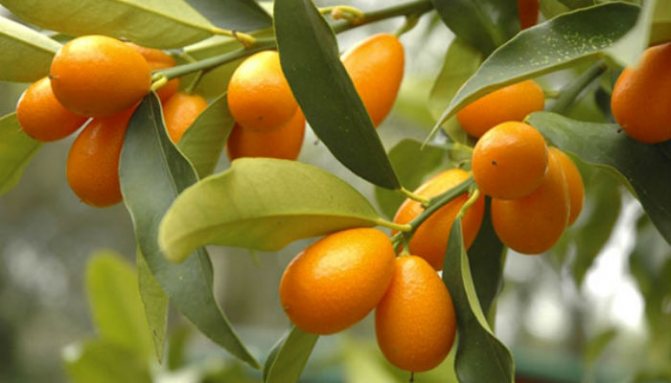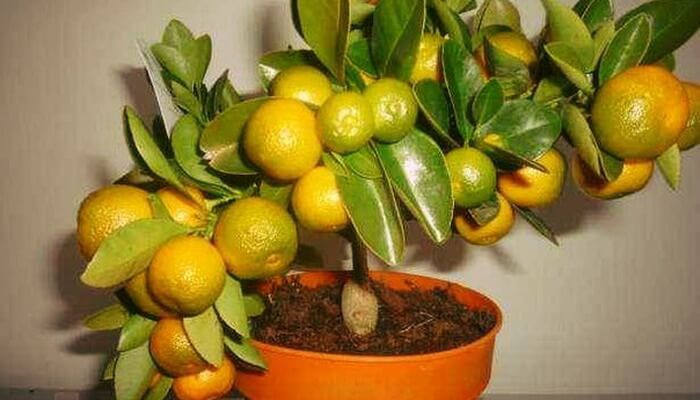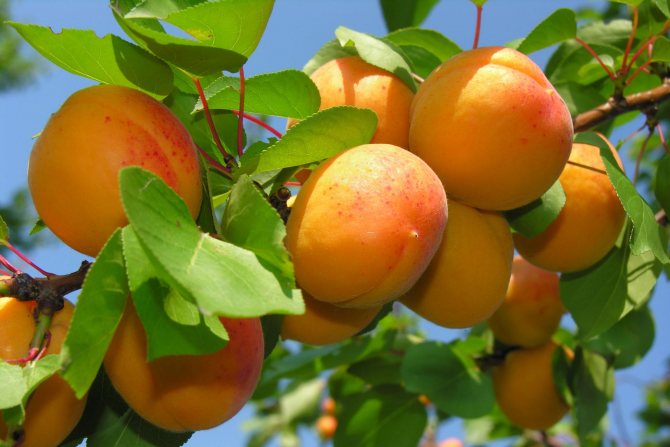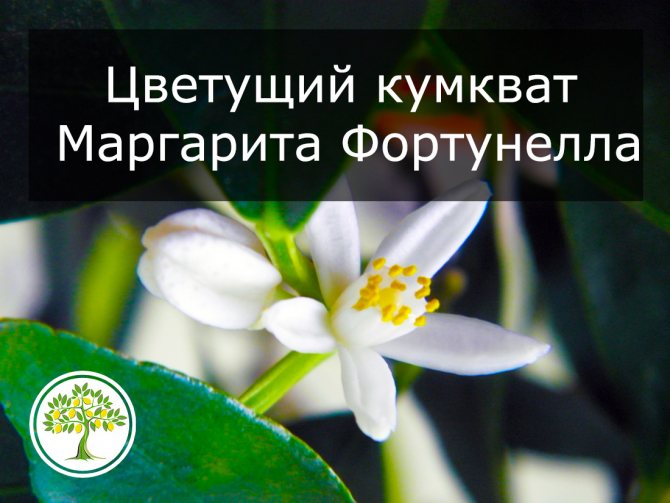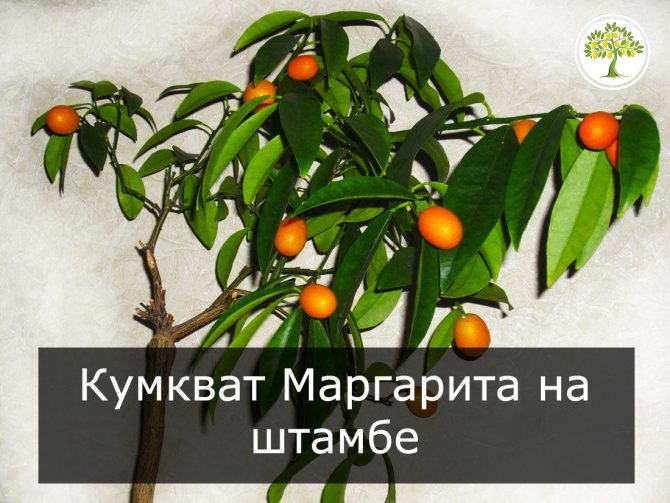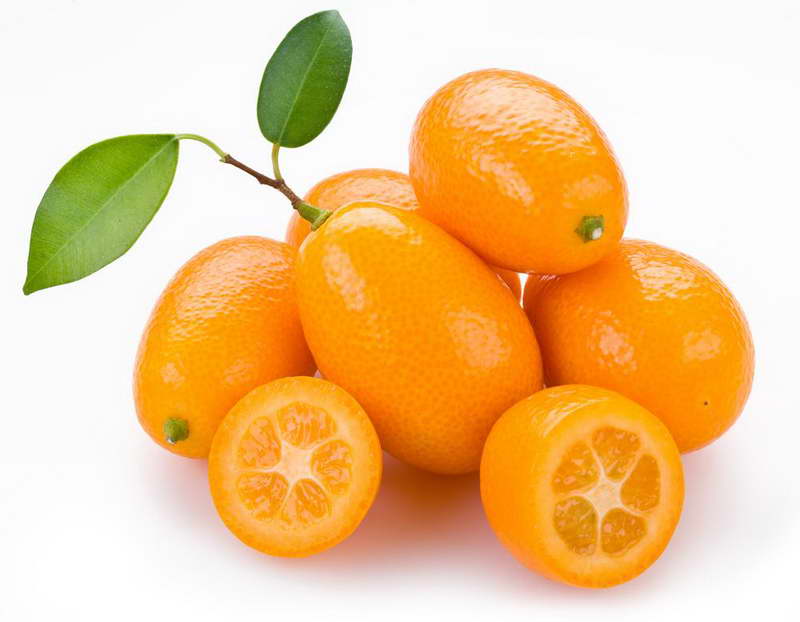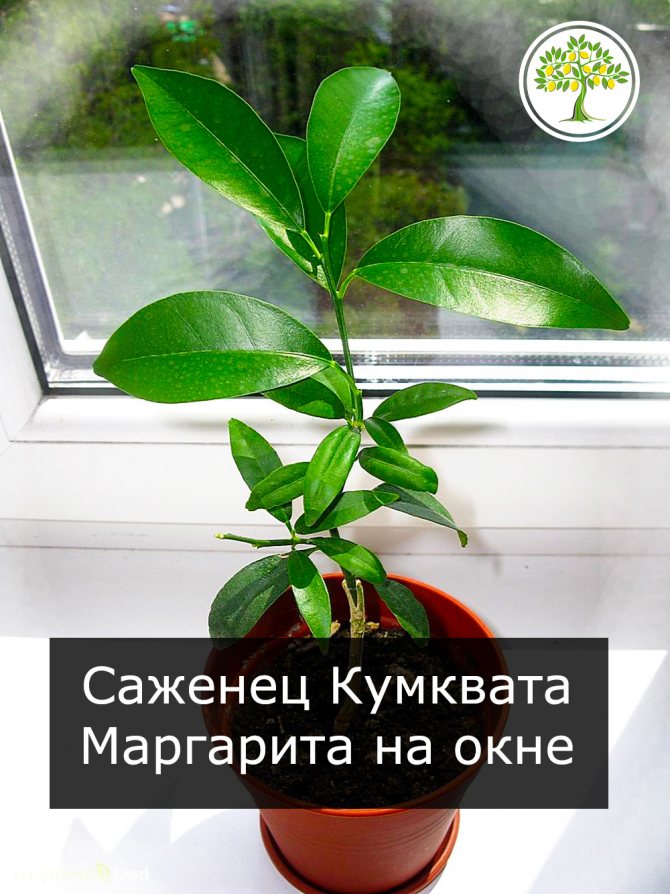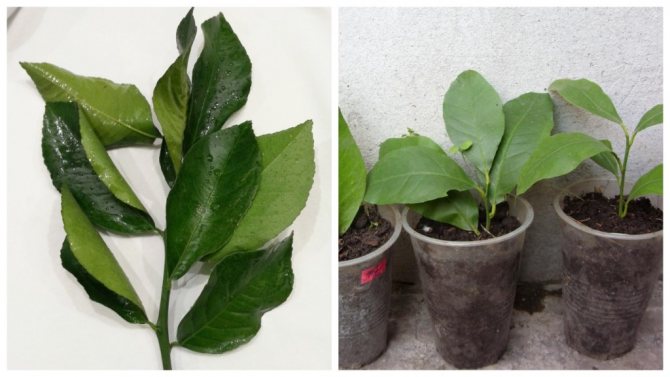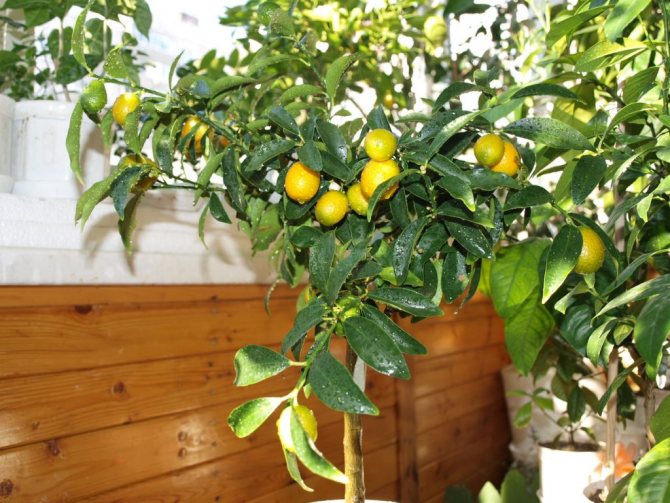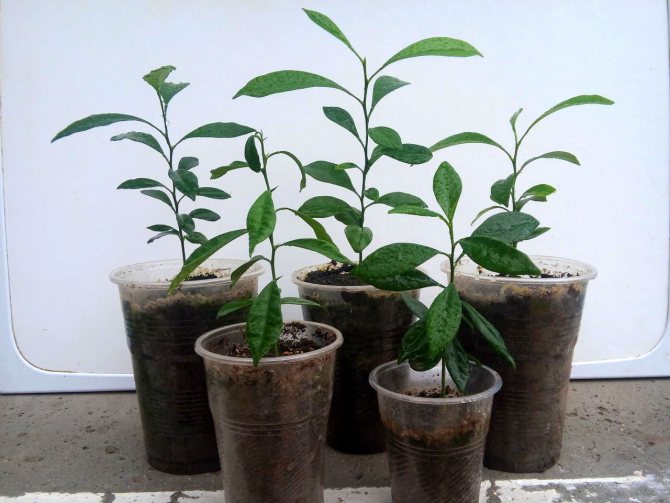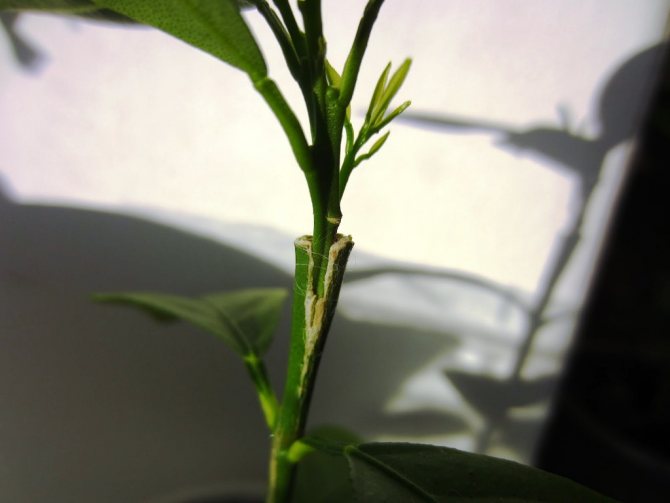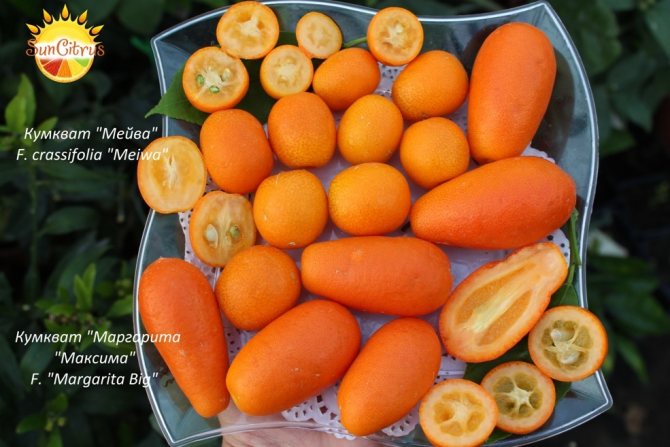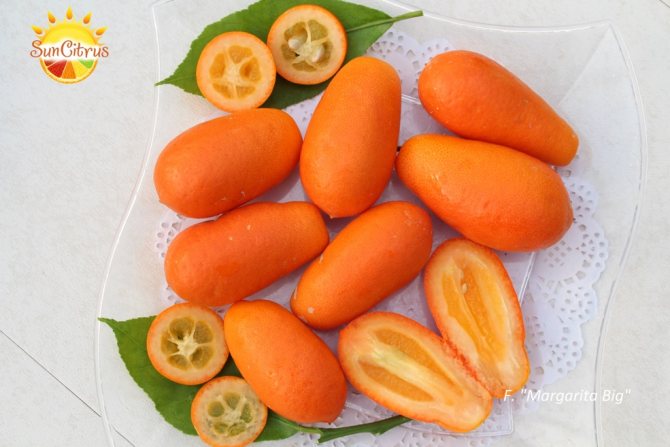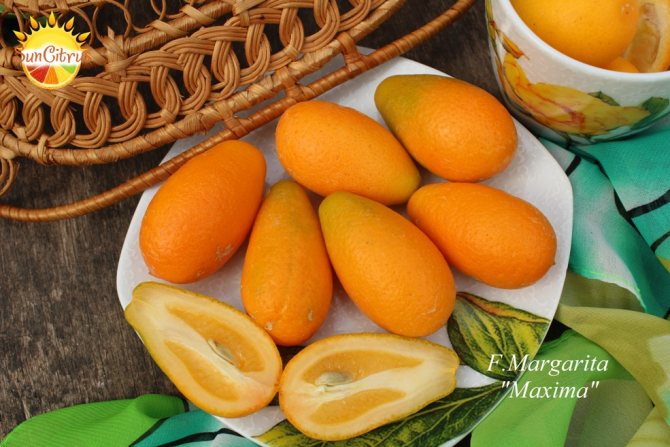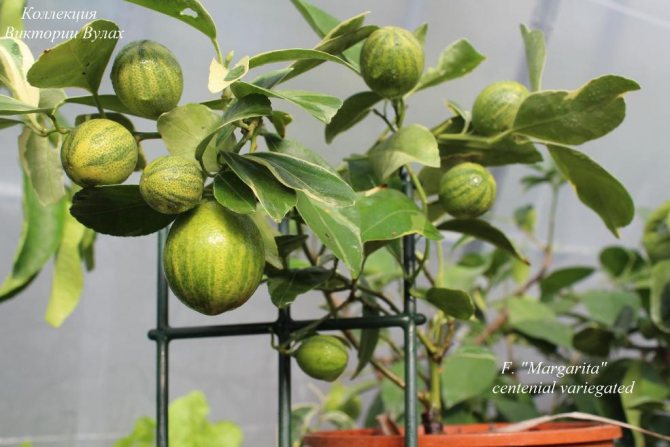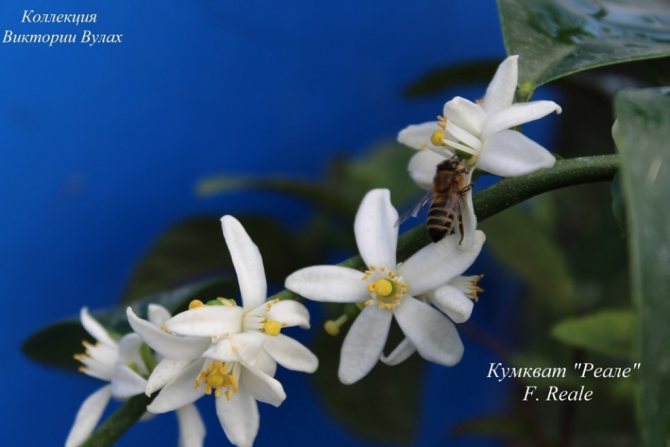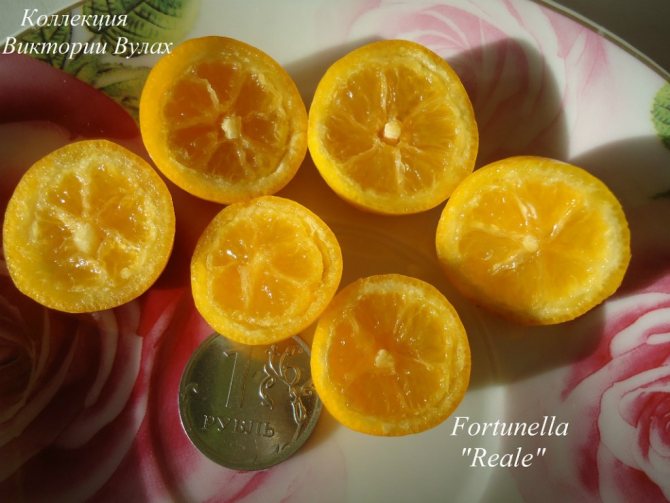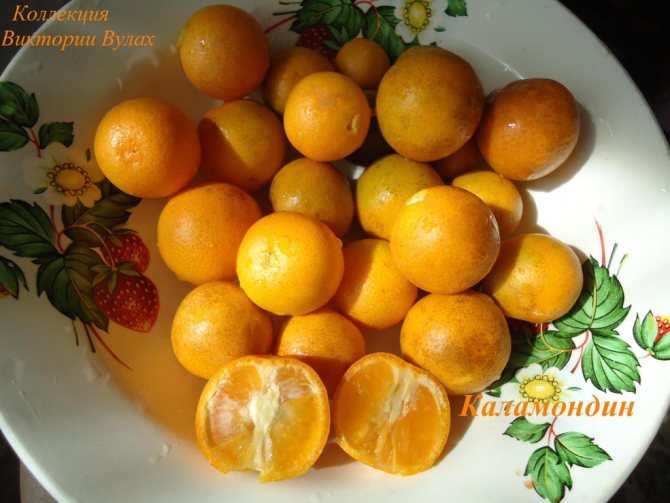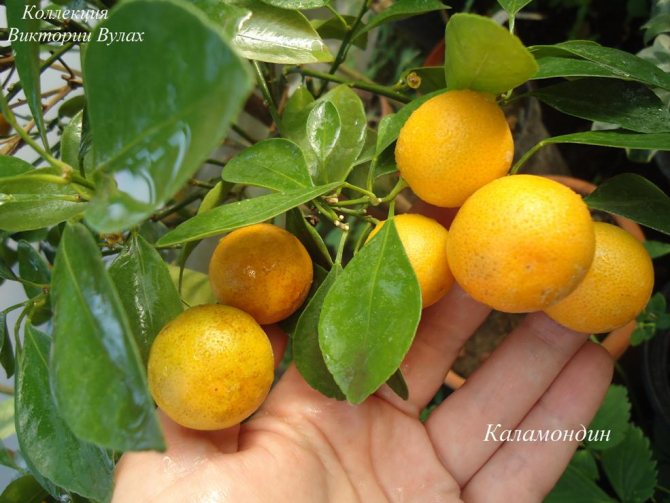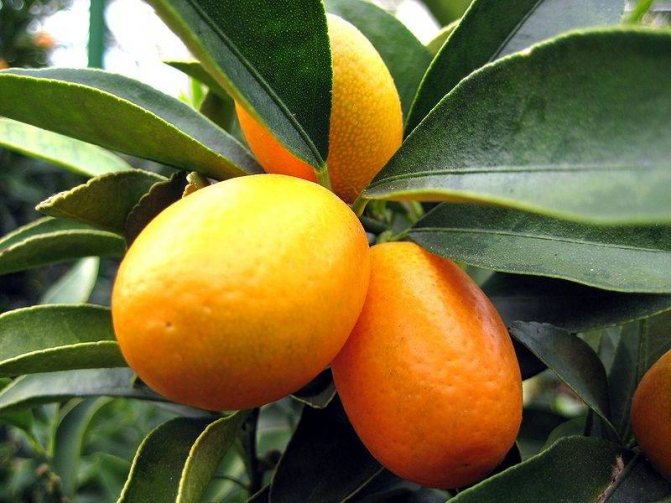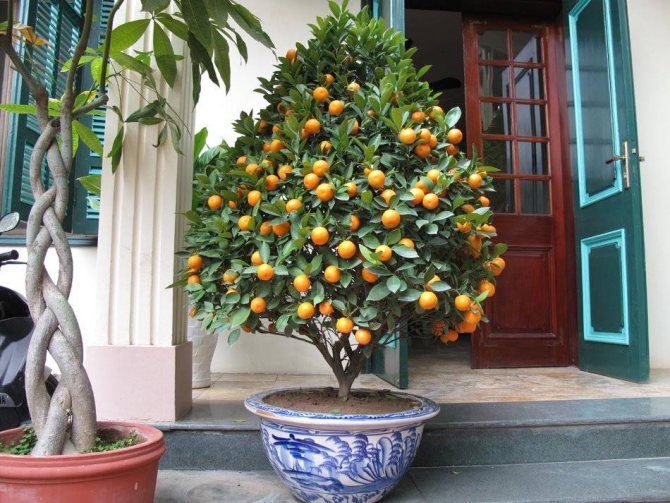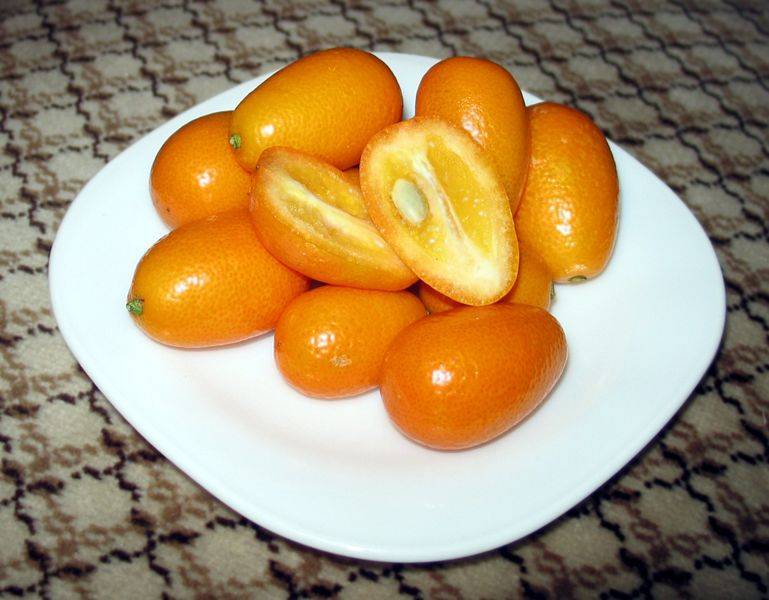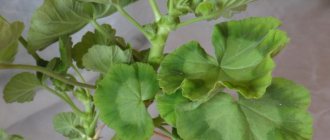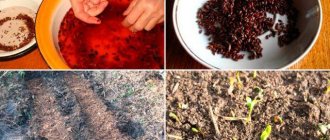Citrus
You will not surprise anyone with exotic citrus plants in the house today. Evergreen trees with a beautiful crown and bright fruits add a special comfort to the home and fill it with a fruity aroma. One of the most unusual citrus fruits is fortunella, or kumquat. The Japanese call this culture "kinkan", which means "golden apple". Growing a kumquat at home is no more difficult than a lemon or an orange, and by providing it with good care, you can enjoy not only the decorative appearance of the tree, but also the delicious taste of its fruits.
Kumquat characteristic
This native of China has several names: kumquat, kinkan, golden and Japanese orange, golden apple, Chinese mandarin. An evergreen miniature compact tree that can be shaped to your liking and is appreciated by indoor plant lovers.
On sale, the plant is usually presented with orange fruits that attract attention and make you want to immediately buy an exotic specimen and taste its fruits, having found out that a thin beautiful peel is sweeter than sour pulp, and the taste of a mix of them is incredible.
How to care for a kumquat so that in the future it will please not only with thick dark green foliage, but also bear fruit? This can be achieved with proper care.
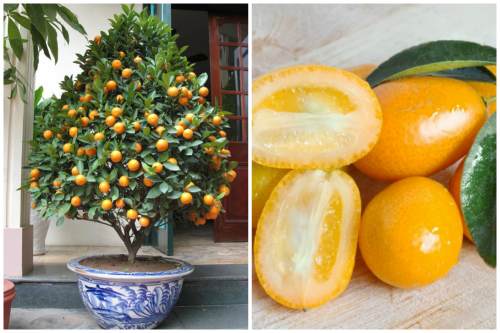
Optimal room conditions
Do not assume that growing indoor kumquats is a simple matter. Like all citrus fruits, it is quite capricious and requires a lot of attention, so the plant needs not only to create a favorable microclimate, but also to know how to care for it.
One of the main conditions for the correct development of a tree is good illumination. Fortunella prefers a lot of bright, but diffused sunlight. Its deficiency affects the decorative qualities and fruiting of the plant - rich green leaves turn yellow, and the tree does not bloom.
In summer, the kumquat should be protected from overheating. To do this, cover the plant with a sheet of paper or cloth at noon so that it does not get burned. If possible, the plant can be taken outside, in partial shade. In winter, a sunny window sill on the south side of the house will be an ideal place for a tree. In cloudy weather, daylight hours are recommended to be extended artificially.
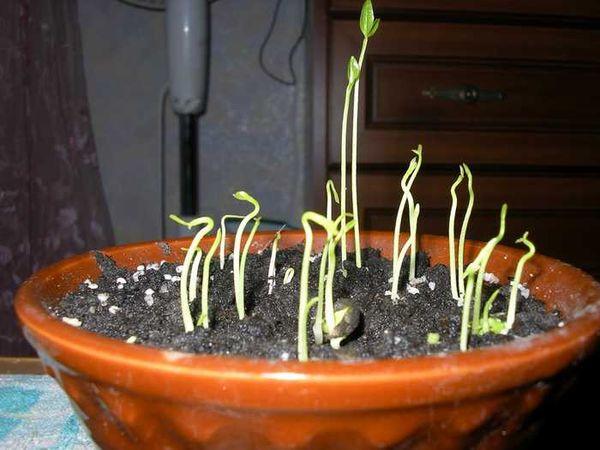

In the life cycle of the indoor kumquat, a short period of time is allotted to rest. The tree stops growing and sheds its foliage. During this period, it is recommended to place it in a cool (15-18 ° C) place and not disturb with watering and feeding. With an increase in daylight hours (end of winter), the kumquat pot can be put back on the windowsill and watering can be resumed.
Features of kinkan care
Growing a kumquat cannot be called simple: the slightest deviations from the optimal conditions of detention affect the appearance. But learning the secrets of grooming is a rewarding goal.
Lighting
A native of warm countries needs a lot of light in order not to lose beauty: leaves fall in low light. But the direct rays of the sun have a negative effect: burns appear on the leaves. If it is impossible to provide such conditions in the apartment, additional lighting is installed.
Temperature
Compliance with the temperature regime is another component of successful care: the orange does not tolerate both high and low temperatures. In winter, the temperature should not exceed 18 degrees, in summer - not fall below 25.
Watering
- Watering is necessary as the soil dries up: in the winter after the end of fruiting - once a month, in the summer - abundantly 2-3 times a week, in the autumn and spring periods - much less often.
- Water for irrigation should be settled and at room temperature: watering with cold water can destroy the plant.
- Another requirement for water: it must be soft. If your tap water is hard, you can add a little citric acid. And here it is necessary to observe the measure: the soil of the kumquat should be neutral.
- After watering, be sure to drain the excess water from the sump.
Spraying
A tropical alien is picky about a certain air humidity. A comfortable environment can be created in several ways:
- put moistened expanded clay in the pallet;
- spray regularly with warm water;
- wipe the leaves with a damp swab;
- arrange shower procedures sometimes;
- install humidifiers.
Important: during the period of winter dormancy, they are sprayed less often. Low temperatures and high humidity cause disease.
Top dressing and fertilizers
In different periods of development, they adhere to different feeding schedules per month:
- with active growth - at least three times;
- during the rest period - once.
The ideal composition of fertilizer per liter of water: 2.5 grams of ammonium nitrate, 1.5 grams of superphosphate and potassium chloride. For top dressing, you can use water with wood ash.
Pruning
To keep a miniature tree as beautiful as it was brought from the store, you need to prune it annually. The formation of a beautiful spherical crown is carried out in the spring: removing the tips of the shoots not only maintains decorativeness, but also increases productivity.
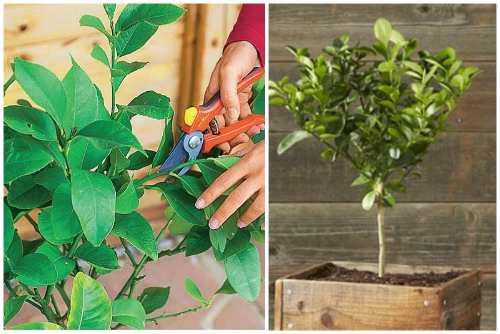

Transfer
Once every three years, the kumquat must be transplanted: during the dormant period before the formation of new shoots.
- The new flower pot should not be much larger than the old one. Drainage is poured at the bottom, always new, a little soil, consisting of sand, fertile soil, humus and sod. The plant from the previous container is carefully transferred, so as not to damage the roots, with a lump of earth.
- The space between the lump of earth with roots and the walls of the pot is filled with soil.
- After watering, the transplanted plant is removed to a dark but warm place, regularly spraying the leaves.
- After two weeks, they are transferred to a bright room.
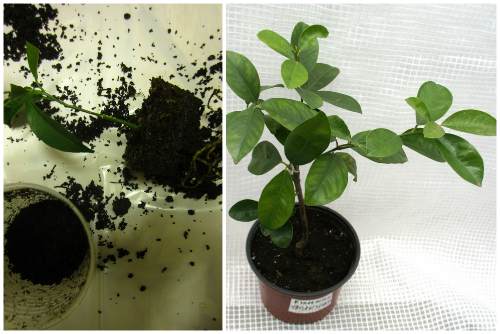

Pruning and replanting
Kumquat trees grown from seeds can be quite tall and branched, so once a year, every spring, their crown is formed, giving it a more well-groomed semicircular look by cutting off the tips of the shoots. This procedure not only increases the decorative effect of plants, but also promotes the active formation of young shoots, which ultimately has a positive effect on the yield of the kumquat.
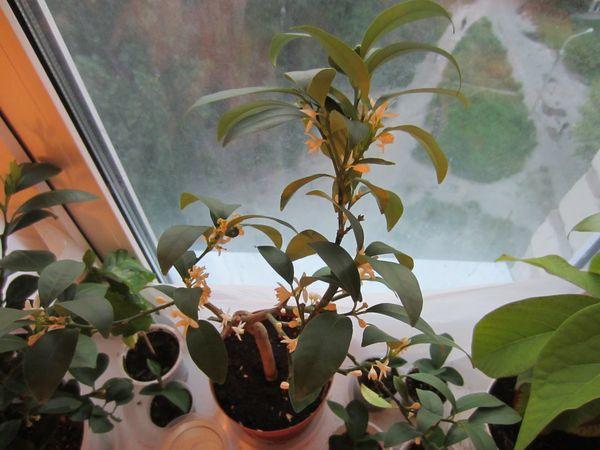

A fruiting kumquat that is cared for at home requires a transplant every 2-3 years. It is carried out at the end of winter - the very beginning of spring, before new shoots begin to grow. The transplanting process involves the transshipment (moving together with the earthen clod) of the plant into a freer container. This must be done carefully, trying not to damage the intertwined roots of the tree. After transplanting, the plant is placed in a slightly darkened place for several weeks (the sun's rays are now contraindicated for it) and the leaves are sprayed daily.
Kumquat pests and diseases
Insufficient lighting, direct sunlight, excessive watering or lack of water can cause diseases, most often fungal infections. Before starting treatment, it is necessary to remove the infected parts and then treat with fungicides (for example, "Fitosporin").
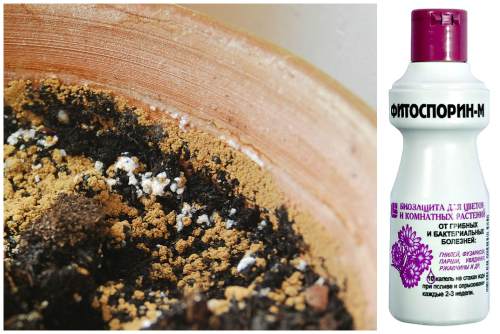

Violation of the conditions of care, as well as contaminated soil, contribute to the appearance of pests (spider mites, aphids, scale insects), which sometimes cause serious harm. Special preparations (Fitoverm, Kinmix, Aktara) will help to get rid of them.
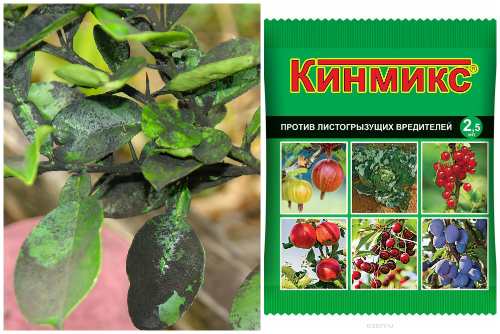

Homeland and features of growth
The biological homeland of the plant is the south and southeast of China. From there, the plant emigrated to Asia, then to Japan and the southern parts of the American continent.
Nowadays, it is no longer possible to meet Fortunella in the wild. It is grown only in culture.
Origin of name. The most notable part of Fortunella is the small, rounded fruit, colored in golden yellow tones. This plant owes them its poetic name, which means "Golden Orange" in Russian.
The Chinese call Fortunella Kumquat (Golden Apple), the Japanese call it Kinkwan (Golden Orange).
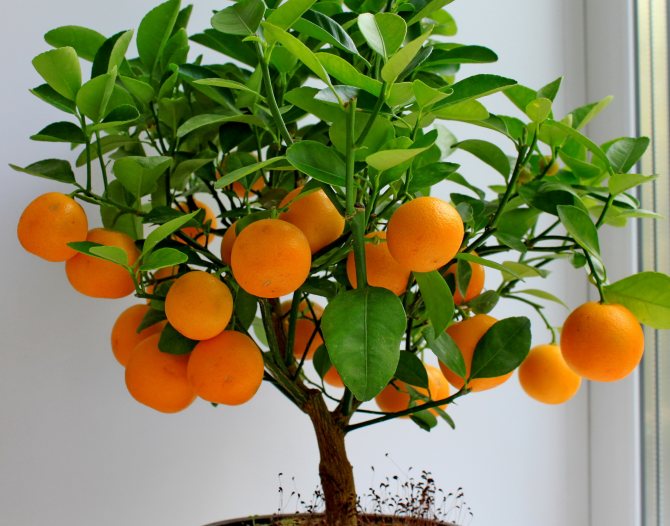

For diminutiveness Fortunella is called "Dwarf Orange"
Breeding kumquat
There are several ways to breed a kumquat, each with its own pros and cons. Some are simple, but the result will have to wait for many years, others require experience.
By cuttings
The most common and easiest way.
- In the spring, before the appearance of flower buds, the upper parts up to 10 cm long are cut off at an angle from healthy branches.
- Cuttings are treated with growth stimulants ("Epin", "Kornevin"), the bottom cut is sprinkled with charcoal, planted in a prepared container, 4-5 pieces, watered, covered with a transparent cap and placed in a bright place, but not under direct sunlight.
- After about three weeks, the cuttings will take root, they can be planted in separate containers.
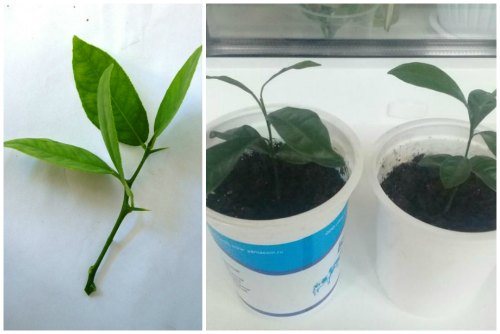

By bone
Growing a kumquat from a stone is a simple procedure, but you will have to wait at least ten years for fruiting.
- Seeds for propagation are taken from ripe fruits, washed.
- They are soaked in a growth stimulator and planted in prepared pots with moistened soil to a depth of two centimeters.
- Cover with glass or plastic and place in a warm place.
- When at least four leaves grow, the seedlings are planted.
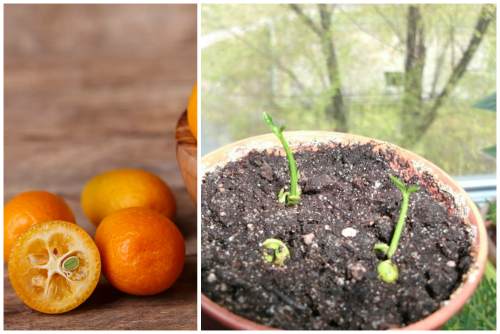

Layers
Reproduction in this way is carried out in the spring:
- On a 1-year-old shoot of at least 20 centimeters in length, make two annular cuts, remove the bark between them, remove the leaves above and below the cuts.
- A small plastic bottle is cut lengthwise into two parts, semicircles are cut in the center of the bottom of each, the diameter should correspond to the diameter of the branch. The bottle is positioned so that the cut is in its center. The halves are fastened with tape, filled with earth and watered.
- It is necessary to constantly moisten the soil in the container, and after two months a root system is formed and you can cut the branch below the bottle, separate its parts, transplant the layers with a lump of earth into pots and put them in a bright place.
Kumquat: growing at home
Exotic fruits grown from seeds and cuttings have long been in vogue. This also applies to such a fruit as kumquat, growing at home does not require much effort and allows you to get a gorgeous tree and delicious fruits.
Varieties for planting
There are many different varieties of kumquat (kinkan), suitable for growing at home:
- Kumquat Nagami. The most popular variety of small fruits. An evergreen plant develops for a long time, forming a low tree or shrub with an oval crown. Fruits of this variety are immune to cold and can grow in all weather conditions, but fruits are found to be sweeter in warmer climates. Kumquat of this variety is distinguished by year-round fruiting and abundant harvest. The plant grows well at home under good lighting conditions.
- Kumquat Malay. The plant is common for ornamental plantings. It can reach a height of 5 meters. Poorly tolerates low temperatures, but is suitable for growing in a greenhouse.This kumquat variety has the largest fruits.
- Kumquat Meiva. The plant of this variety is short and compact, with a rounded crown and small, but dense foliage. According to some growers, this variety is hybrid and originated by crossing the Nogami and Marumi varieties. The kumquat begins to bloom in the summer, but the fruits ripen only by the beginning of winter. Low temperatures do not tolerate well. The fruits of this variety are distinguished by the best taste and a low number of seeds.
Caring for various varieties at home differs little, mainly the temperature regime differs.
Seed planting
Growing citrus from seed is a complex and time-consuming process. For a good planting result, only fresh seed from ripe fruits must be used.
- The bone extracted from the fruit should be washed well and blotted with a dry napkin, then immersed in a growth stimulator solution for a couple of hours.
- The size of the pot for growing a tree should not be less than 8 cm in diameter, but not more than 10 cm. A drainage layer of expanded clay should be placed at the bottom of the planting container, on top of which the prepared soil is poured.
- To make the golden citrus soil, you must mix the same amount of sand and garden soil. The sand must be pre-calcined to prevent the development of various diseases.
Seeds are placed in the prepared soil to a depth of 1-2 cm, after which the soil is moistened, and the pot is covered with a film. 1-3 bones should be planted in one container. Seed germination occurs at high humidity and a temperature of at least 20 degrees.
After about 40 days, the first shoots will appear. Plants should be planted in separate containers when there are at least 4 true leaves on each of the sprouts.
Note! Not all seeds will sprout, so you should plant in multiple pots to get at least one tree.
Cuttings
Propagation by cuttings is the main method for obtaining young plants at home. Cuttings can be carried out throughout the year, but it is best to do this procedure in April.
Cuttings must be cut from young shoots so that they have at least 3 levels of leaves. The prepared layers should be placed in a solution that stimulates the formation of the root system for 2-3 hours, after which they are placed in moist soil and covered with jars.
Important! You can cut off layers only from those trees that have already borne fruit at least once.
The root system of the cuttings is formed in 2-3 weeks, after which the seedlings can be transplanted into another container or outside if growing in the open field is planned.
Care
Fortunella or kumquat requires careful, year-round maintenance. For the good development of the tree, it is necessary that the air temperature in the room in the summer is not lower than 25 degrees, and in the winter - not lower than 15 degrees.
To maintain the optimum moisture level, the plant must be sprayed daily with warm water and the watering regime must be observed. It is also possible to install air humidifiers near the tree.
Citrus needs good year-round lighting. In this case, it is necessary to observe the peculiarities of the needs for sunlight. In winter, the tree should be exposed to direct sunlight or additional light sources. And in the summer months, the light entering the crown must be diffused to prevent burns.
Watering
If all climatic conditions for growing are met, then the plant needs abundant watering. In winter, the plant is watered 1-2 times a week, preventing the upper layers of the soil from drying out, and in the warm months, watering should be daily.
Important! Watering a tree can only be done with settled water at room temperature. It is not recommended to use boiled water.
Transfer
Kumquats are transplanted every three years, during the winter months, before active growth of young shoots begins. For transplanting, a container 5-10 cm larger in diameter is used, after which drainage and fertile soil are placed in it. It is necessary to move the plant along with the earthen root in order to prevent damage to the root system.
After moving the plant to a new pot, you need to fill up the missing amount of the substrate and put the tree in a shady place for a couple of weeks.
Top dressing and fertilization
Fertilization of a plant is carried out according to a simple principle - the smaller the container in which the tree grows, the more often it needs to be fertilized.
In summer, citrus is fertilized 2 times a month, and in winter - once every 1-1.5 months. A solution of mineral fertilizers for citrus trees, sold in flower shops, is suitable for feeding.
Crown formation
To give the tree a presentable look, every spring, excess and dead shoots are cut off.
It is necessary to remove all shoots from the main branches, except for the 2-3 most strong ones. The total length of young branches is also shortened in order to provoke the growth of young shoots.
Diseases and pests
Like any plant, the citrus tree is susceptible to various diseases and pest attacks. Most often this happens due to non-compliance with the rules of care.
Most often, the indoor tree is attacked by such parasites as spider mites and scale insects. To prevent their appearance, it is necessary to carefully monitor the hygiene of the plant, carry out its daily spraying and rinse the foliage from dust and dirt.
To get rid of pests, chemicals are used that are prohibited from using in a confined space. Therefore, for processing vegetation, it must be taken out into fresh air.
In an apartment, the plant can be treated with a solution of soapy water, but this does not always give good results and can negatively affect the state of the foliage.
The appearance of a spider mite is visible to the naked eye. The insect is small, but due to its red color, it is clearly visible. When touched, the pests begin to actively move and scatter. White dots appear on the bottom of the leaf, which are larvae. Young leaves become an incubator for new larvae, so adult insects twist them into a tube and wrap them with white cobwebs.
When a plant is attacked by a scale insect, grayish formations form on the branches and leaves, which grow over time and begin to secrete a sticky liquid that is almost impossible to wash off with water. Prolonged exposure to insects on the tree leads to their death.
Shedding foliage
If the humidity level is not observed, the leaves of the indoor tree fall off. During this period, the plant becomes most susceptible to other diseases and pests. Spraying with plenty of water every day helps to clean the leaves of contamination and prevent problems from occurring.
Leaves can also fall off when the kumquat is watered with cold tap water, which is completely unacceptable.
Despite all the difficulties in care, citrus trees are very popular. Kumquat is popular due to the fact that it bears fruit even if the plant is grown from a seed, which is not characteristic of other types of citrus fruits.
Types and varieties of kumquat
Several hybrids have been created by crossing kumquat with citrus fruits:
- with lime - limequat,
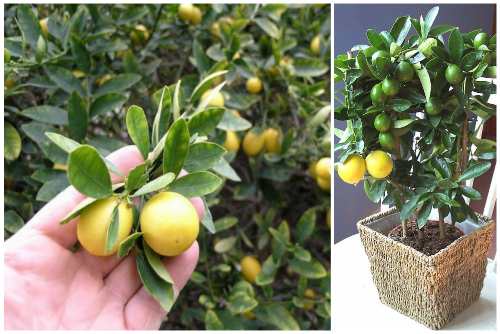

- crossing with tangerine - calamondin (citrofortunella),
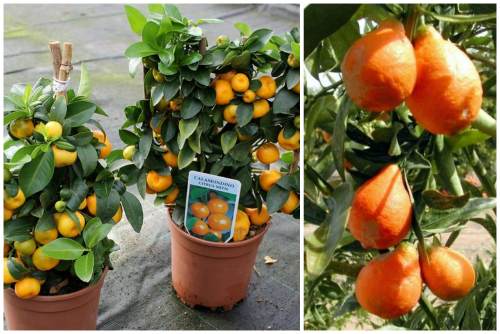

- with lemon - lemonquat.
At home, several varieties give excellent results:
- Nagami, the second name is kumquat Margarita (Fortunella Margarita) - with bright sweet fruits, similar in shape to olives;
- Marumi - with orange oval sweet fruits;
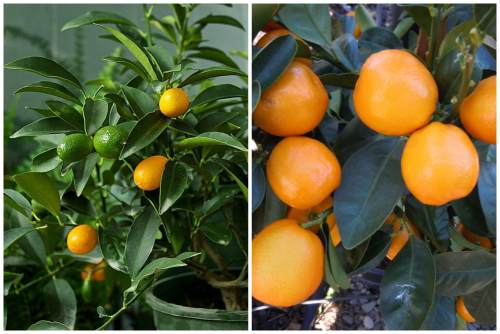

- Meiva - with orange-yellow fruits, similar to lemon, and with a sour taste;
- Fukushi - with large orange sweet fruits.
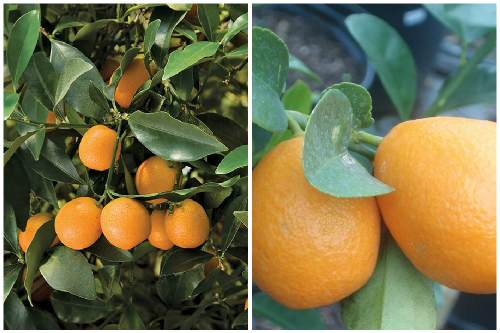

Kumquat: "golden orange" - the secrets of growing at home
The kumquat plant captivates with its exoticism. Growing and propagating this fruit is possible at home. Having planted it and provided proper care, you can not only grow a very decorative tree, as in the presented photos, but also enjoy the exquisite taste of its fruits.
General description of the plant
The homeland of the kumquat is China. From there, the plant was later introduced to America and Europe. Its name is translated as "golden orange". In Japan, another name for the fruit is common - Kinkan (golden apple).
Kumquat is a very beautiful plant with delicious fruits.
The plant is a small tree. At home, it grows up to 1.5 m, and in the wild - up to 4.5 m. The kumquat crown is highly branched, dense, densely leafy. The leaves are small, smooth, dark green. The kumquat blooms white with pink fragrant flowers. Flowers are located singly or in inflorescences. The fruits are somewhat reminiscent of a tangerine, only much smaller. Their weight does not exceed 30 g, the skin is thin, bright orange. The taste of kumquat fruit is balanced, thanks to the aromatic sweet skin and pulp with sourness.
Kumquat Nagami
Varieties and varieties of kumquat
The most common cultivation at home is the Nagami Kumquat. Outwardly, it is a very ornamental plant and is used in the design of bonsai gardens. Its crown is compact and covered with bright orange fruits during the fruiting period. There are garden forms of kumquat Nagami:
- Nordmann Nagami is a seedless subspecies, outwardly similar to Nagami.
- Variegated - its distinctive feature is yellowish or creamy leaves. The fruits initially have longitudinal green stripes that disappear when ripe.
Variegated kumquat
- Kumquat Marumi (Marumi Kumquat) stands out for the presence of thorns on the branches. The size of a tree of this species is somewhat smaller. Fruits are golden orange when ripe, with small seeds. The plant is conditionally winter-hardy. In the southern regions, it can grow outdoors.
Using kumquat
The fruits are used fresh, added to desserts, they are used to make juice, marmalade, jam. Dried kumquats are a part of various seasonings for meat and fish dishes, serve as a decoration for cakes, cocktails and ice cream.
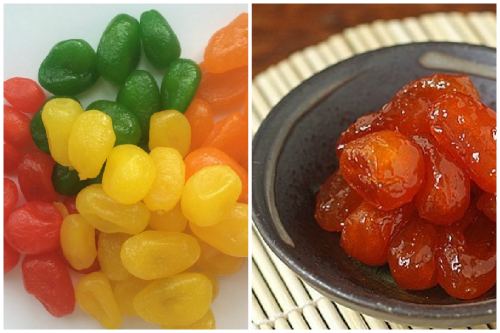

The benefits of eating the fruits of this plant have been proven. The beneficial properties of the microelements, vitamins, essential oils contained in them contribute to the treatment of many ailments: they normalize digestion and blood circulation, increase hemoglobin and immunity, improve heart function, and relieve hangover syndrome.
Home-grown kumquat is the enjoyment of decorativeness and the possession of fruits with a storehouse of useful properties.
Kumquat - how to grow at home
Surely, at least once walking through the supermarket, you went to the department with exotic fruits and saw there the mangoes, avocados and even papaya that are already familiar to us. It is difficult to confuse them with other fruits, but they do not cause much interest, unlike the kumquat, which is unusual for the eyes. Therefore, until now, many are wondering - what kind of kumquat fruit is and can it be grown at home? If you came across this article, then you are also interested. So let's figure out how to grow a kumquat. Kumquat is a yellow-orange tropical fruit native to China. It was there, back in the XII century, that he first became known. The kumquat was introduced to Europe much later, in 1846. The English botanist Robert Fortune presented the fruit at the annual exhibition, referring it to the citrus family, and a little later singling out a separate group for it. Today plantations of the "golden orange" are found in the USA, Japan, China, Greece and southern Asia. When buying a kumquat, pay attention, first of all, to its appearance.The peel should be yellow-orange in color, without black spots and other things. The fruit should not be too soft, but hard is not needed. This means that the fruit is still green. Store the purchased mini-orange in the refrigerator for no more than 2.5-3 weeks. But before that, the fruits must be well washed and dried so that there is no moisture left on them. In addition to storing whole fruits, you can grind them into gruel and store in the freezer for up to 5-6 months. At the same time, all useful properties are preserved. You will be surprised, but there is a huge benefit in such a small fruit. Firstly, kumquat is rich in many vitamins B, C and A. Secondly, it contains micro and macronutrients, pectin and fiber. The latter has a beneficial effect on the work of the gastrointestinal tract. So if you do not want to get sick with gastritis, then use kumquatat, it will reduce the risk of this disease. In addition, this fruit from the Middle Kingdom will relieve apathy, increase immunity and "cure" depression. In the east, kumquat is used in folk medicine to treat the flu and colds. The fruit will not bring much harm, but it is not recommended for people with high acidity of the stomach and during pregnancy. Another question that interests many is the calorie content of kumquat. Fresh fruit has 71 calories per 100 grams, while dried fruit has 284 calories. So, if you are on a diet, it is contraindicated for you. Well, now let's move on to the main question - how to grow a kumquat at home? Most often, two types of kumquats are grown at home - Nagami or Rotondo. Outwardly, these are bushes up to one and a half meters high, with dense shiny, dark green leaves. The stem is small, of medium thickness, without thorns. Blooms in summer, July or August. The flowering period is not long, up to 7 days, after which the flowers fade. Sometimes they can be tied again, after 14-20 days, but this is extremely rare. After the flowers have faded, fruits are formed, which ripen in late December - until mid-January. Important! If you have planted a tree as a decoration, then you should not monitor the number of flowers. As a result, you will get a beautiful bush covered with small kumquats. But if the tree is planted for edible needs, then the flowering is regulated, since the excessive number of flowers will weaken the kumquat, and the fruits will be very small and cannot fully ripen. The process of planting a tree itself is not too complicated and is carried out in three ways: with a bone, a cuttings or seeds. The most frequently asked question is how to grow a kumquat from a stone at home? To do this is simple, just purchase a fresh, unprocessed ripe fruit, remove the seeds from it and plant it in the ground with an admixture of coarse sand. Then pour over and cover with foil in order to achieve the effect of a greenhouse. In this case, it is important that the ground is always moist, but not wet. The first leaves will appear after 30-60 days, depending on whether you used growth hormone. When leaves appear on the tree, then the first 4-5 need to be picketed and planted in other pots. When the tree itself grows up, the top is pinched. It is important to remember that a bone planting is not the fastest option. The tree will bloom only after 10-12 years. Planting a kumquat by buying a stalk in the store or taking it from friends is the best option. It is enough to take several cuttings 10 cm long, sprinkle them with activated or crushed charcoal at the cut and plant them in sand, to a depth of 3-3.5 cm.At the same time, there should be a drainage layer at the bottom of the pot, and at the top, the future tree is covered with ordinary soil ... After planting, the cutting is covered with a jar or bottle and watered. The pot is placed in a warm, sunny place, but not on the windowsill. If all the conditions are met, then after 14-21 days the cuttings will take root, and a little "matured" are transplanted into a separate pot.To plant seeds, you need to prepare a little and, first of all, buy a special soil for citrus fruits and a growth stimulator. The seeds themselves must first be soaked in warm water for a short time - up to 10 minutes in order to remove the top layer that interferes with germination. After the film peels off, the seeds are wrapped in damp gauze and put in a warm place in order to wait for germination. For 2-3 days, the hormone horst is added. After the seeds germinate, they are planted in a pot of soil. Do not forget about the drainage of the order of 5-6 cm. It is better to plant 2-3 seeds in one pot, since the kumquat is difficult to grow. Also, do not forget to cover it with plastic and put it in a dark, warm place. At a temperature of at least 20 degrees, the sprouts will begin to break through to the surface after 2 months. Then the film should be removed and the pot placed closer to the light. It will bloom no earlier than 10 years later. The plant is watered as the soil dries up with warm, settled water. In winter, no more than 1 time per week, in summer 2-3. During the growing season (March-September), feeding is carried out 2-3 times a month, in the usual season, once every 1.5-2 months. In winter, you need to take care of additional light sources for the plant. It is also important to monitor the humidity of the air. If it falls, the kumquat will shed its leaves, so in the summer the leaves are periodically sprayed with warm water. The optimum temperature in summer is 25-30 degrees, in winter at least 15. Transplant is carried out every 4 years. For information on how kumquat is grown at home, see the video below. What is a kumquat and how much does it cost Useful properties of grapefruit List of the most common citrus fruits How to care for indoor tangerine: the main secrets
Watering and humidity
Kumquat is a subtropical plant and does not tolerate dry air - it sheds leaves, becomes vulnerable to pests and diseases. Ideally, he needs a micro-irrigation system, but regular spraying and the proximity of Bromeliad plants may well keep the moisture level needed by the kumquat.
Watering fortunella is regular, however, you should not abuse it. It is enough not to allow the soil to dry out. Water for irrigation is warm, settled. It is good to add Fitosporin-M or wood ash to the water. This strengthens the immunity of the house tree and, at the same time, nourishes it.
Growing
A feature of Fortunella's vegetation is its slow growth. The longevity of the plant serves as compensation.
Seat selection
Fortunella loves sunlight and needs a long day of light.
She will be comfortable on windows of any direction, with the exception of the northern ones. In summer, it is better to place the plant outdoors, protecting it from the bright midday sun.
In autumn and winter, lighting and fresh air are needed (regular ventilation).
Air requirements
Temperature
The optimal summer temperature is 25-30 ° C, in winter not lower than 15-18 ° C
Important! The plant does not tolerate temperature fluctuations well. When placing it, it is important to exclude even the temperature difference in the room and on the windowsill.
Air humidity
Kumquat needs moist air. This is especially true in winter, when central heating batteries are operating. This fact must be taken into account before purchasing a plant.
The subtleties of sowing seeds
For growing kumquat, it is better to purchase a specialized soil for citrus plants
, it contains essential trace elements. A flower pot is suitable as a container, on the bottom of which drainage is poured with a layer of 6–8 cm. Kumquat is a tropical plant, so you need to plant seeds in moist and loose soil. The seeds are lightly pressed into the soil, and sprinkled with a thin layer of earth.It is better to sow several seeds at once, because the kumquat is quite tough-like; later, extra sprouts can be removed, leaving the strongest, or simply planted. To create a greenhouse effect, crops in a pot must be covered with glass or stretched over a film, and then removed to a dark and warm place.
Before the emergence of seedlings, you need to monitor the moisture content of the soil, preventing it from drying out, but not flooding it, because the bones can rot and die from excess water. Sprouts begin to break out of the ground in the second month after planting.
at a temperature not lower than 20 ° C. After the emergence of seedlings from the container, it is necessary to remove the film or glass, otherwise the kumquat will simply suffocate and die. To obtain maximum illumination, the pot with the plant must be rearranged on the windowsill closer to the light, preferably to the south.
Common varieties
The following types are considered the most popular:
- Fukushi / Changshu. The height of the tree is up to 1.5 m, without thorns, the crown is symmetrical. Leaves and fruits in the form of an oval, the fruit is large, up to 50 mm in diameter. The skin is sweet, smooth, the pulp is juicy.
- Hong Kong. It grows in China and is known as the "golden bean" variety. Fruit size no more than 20 mm, orange peel with red dots, tree with thorns 20 mm or more. There are large bones in the pulp. The fruit is not very juicy, sour in taste and therefore is used for cooking.
- Malay. Endemic to the Malay Peninsula, South China. The skin has a golden orange tint, the seed of the pulp is large. The fruits are juicy, with a clear sourness.
- Marumi. Winter-hardy variety, brought from Japan one of the first. Height 2.7 m, there are thorns, oval leaves, round fruits, slightly flattened at the poles and have 1-3 seeds. The size of citrus is up to 30 mm, the taste of the pulp is more sour.
- Meiva. Not the most studied kinkan variety. The tree is thornless, the foliage is hard and round. Fruits up to 40 mm, sweet taste, thick crust. The tree looks very beautiful, so it is often grown precisely because of its decorative qualities.
- Nagami. A popular variety of kumquat that can be eaten fresh, dried and made jam. Delicious pulp with obvious acidity contains trace elements, minerals and is not inferior in benefits to the best varieties of citrus fruits.
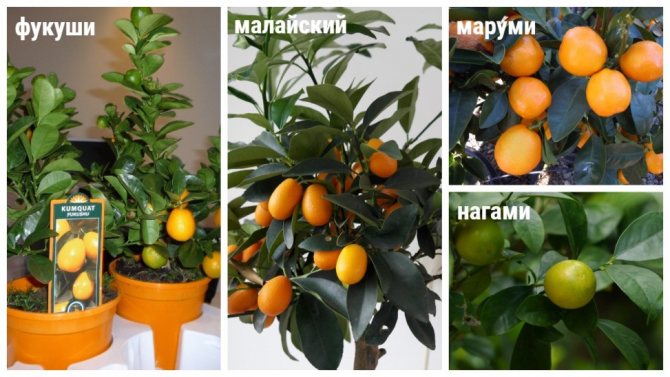

Kumquat varieties for home cultivation
As for the advantages, the kinkan has a huge number of them:
- Decorative appeal. During the flowering period, the plant smells of delicate aromas, the leaves look fresh, and even if the kinkan does not bear fruit, it looks exotic and beautiful.
- The ability to use the fruits in fresh and dried form, to use for the manufacture of desserts.
- Some plants do not have thorns - maiva, and marumi can withstand winter frosts down to -10 ° C, so it will survive the cold season without any problems, and Changshu is suitable for planting in gardens - the culture is distinguished by its rapid growth and compact crown.
Reviews of gardeners on the results of cultivation
The plant has earned only good reviews, both from gardening masters and beginners. It does not make special demands on the climate and watering, the feeding is simple, the plant rests in the winter.
Masters warn that it will not work to speed up the fruiting period, the tree itself decides when to start giving fruit. Some professionals remove the first flowers and fruits to give the plant more time to gain strength - this is normal. The main thing is to know that the leaves of the tree may fall off from cold tap water, do not forget to acidify the liquid or buy bottled clean water, use tap liquid that has been previously settled for 2-3 days at room temperature.
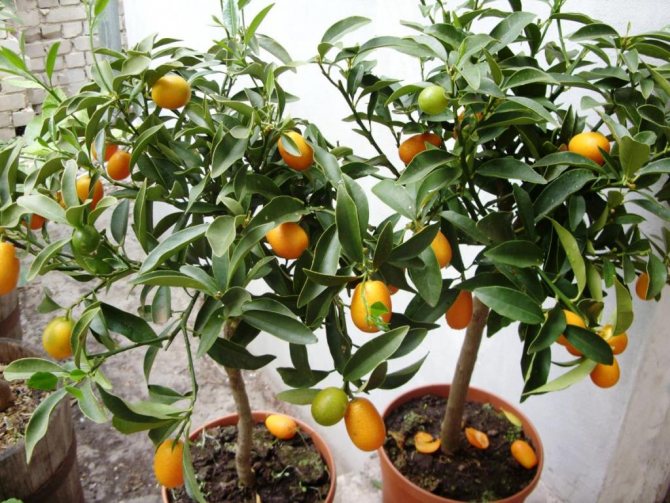

Indoor kumquat
Kumquat is a real gift of nature that will benefit people in all kinds. Natural antibacterial agent has proven itself in the fight against fungus, normalizes blood sugar levels and helps to improve metabolism.In addition, kinkan can be stewed, fried, baked and served with wine, spirits, or dipped in chocolate fondue.
Flowering and fruiting
Kumquat blooms in mid-July, small white flowers are successfully collected in a brush for pollination. Flowering takes place in two stages with a difference of 2-3 weeks. The fruits begin to set by the beginning of winter, and the first ripen at the end of December. Bright orange or golden oranges weigh an average of 30 g, are oval or round, each cut in diameter up to 2 cm, length - 5-6 cm. Exotic tree bears fruit almost all winter, the last fruits ripen in February. The taste of the pulp is sour, but the thin skin is sweet, thanks to which the kumquat can be eaten along with the peel. The calorie content of each orange does not exceed 60 kcal per 100 g.
Plant crown formation
Kinkan or fortunella will decorate any home flower garden. Moreover, the flowering period will be even brighter and longer if you learn how to properly form the kumquat crown. For a lush, healthy plant one day, form one main stem and leave at least four developed buds with leaves. Remember that it is advisable to not only prune the kumquat from time to time, but also ensure the vaccination.
Growing fortunella seems to be a rather laborious process. But for those who will be able to understand its main intricacies, everything that remains will no longer be so frightening.
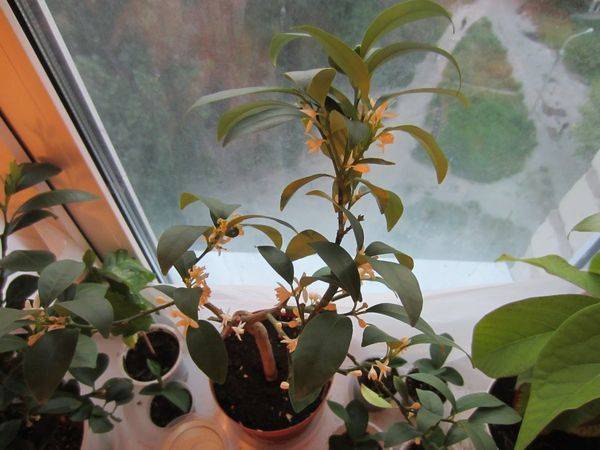

Photos
Kinkan: photo of the plant and its fruits.
Temperature and lighting
Kumquat is a thermophilic and evergreen plant. However, it requires a lot of care in terms of lighting and temperature. Only some varieties tolerate a drop in air temperature to negative values. For fortunella, it is also important to have a dormant period - from March to June, after the harvest.
Primary requirements:
- Diffuse light or partial shade
- Lack of drafts - the kumquat sheds its leaves with constant intense air movement. However, it favors living in the summer on a balcony or terrace in a quiet place. In this case, control the night and day temperature drops, preventing hypothermia of the home kumquat.
- During the growing season: ToC - 20-30oC
- During the rest period: ToC - 10oC
Useful properties of fruits:
- - strengthening bones (contains calcium, which contributes to the rapid recovery of injured bones and their healthy state in old age)
- - improving digestion (effectively increases the absorption of nutrients, helps with intestinal cramps, bloating, constipation)
- - strengthening and improving the appearance of hair and teeth (the presence of minerals improves the structure and strength of the hair, and calcium, potassium and vitamin C, which is part of the composition, are responsible for the strength of our teeth)
- - improving the condition of the skin (protects against the effects of aggressive components of the sun's rays, free radicals, wrinkles)
- - helps in the fight against cancer (vitamins that make up kumquat help protect the body from the effects of the very same free radicals that damage the DNA of our healthy cells)
- -helps in the fight against diabetes (the fibers in the composition regulate the balance of insulin and glucose in the body)
- - protection of immunity (the presence of a large amount of vitamin C and trace elements increase the protective properties of the body, which is important during epidemics)
- - for vision (prevents the development of eye cataracts, the likelihood of developing a macular spot due to beta-carotene in the composition)
- - in the treatment of colds (high vitamin C content increases immunity, and also helps to cope with sore throats)
- - when losing weight (fiber, water, carbohydrate content, as well as low calorie content, reduces the desire to eat)
- - to increase vital energy (a large amount of carbohydrates in the composition helps to replenish the energy we need during the day)
- - for the health of the kidneys (due to the high concentration of citric acid, it keeps the kidneys healthy)
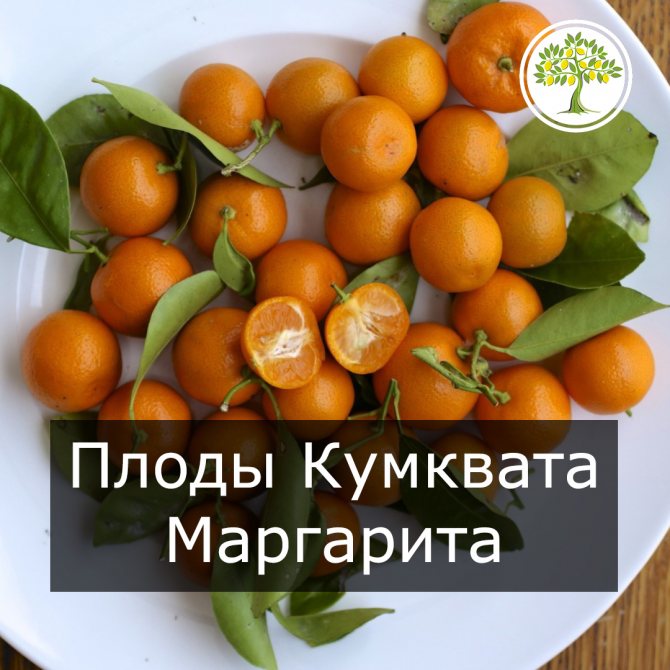

Kumquat Margarita bears fruit very often and abundantly
Kumquat fruit margarita can be eaten both raw and added to salads, baked meat and fish with it. It is very often found in stores in the form of candied fruits. You can also make jam from the fruit or simply sugar.
Transplant, soil, top dressing
Like all citrus trees, the home kumquat is picky about the soil. Ideally, for growing kumquat at home, you need to purchase special soil mixtures. However, they can be successfully compiled by ourselves. This will require:
- Coarse sand
- Neutral peat (pay attention to the acidity of the peat: it can be different)
- Humus
- Garden land
For an adult homemade kumquat, all four components are taken in equal proportions, for a young one, the amount of sand is doubled. Before planting, the components of the mixture must be thoroughly mixed and subjected to heat or chemical treatment to get rid of pests.
Chemical soil treatment: potassium permanganate, insectoacaricides, Fitosporin - M.
Combining Fitosporin with Aktara or Aktellik is very effective. It is not recommended to use permanganate with Fitosporin.
Heat treatment of the soil:
- Annealing in the oven - 1 hour at 180 ° C
- Microwave - 10 min at maximum power
- Calcining over an open fire - 2 hours with constant stirring
- Water bath - 1.5 hours
When disinfecting by thermal methods, wood ash is added to the prepared soil at the rate of 30 grams. on 2 kg of soil before the start of processing. After processing and complete cooling, bacterial fertilizers are applied - Baikal EM, Fitosporin - M or brewer's yeast. The latter are not used when growing citrus fruits.
A homemade kumquat is transplanted as it grows by the transshipment method while preserving the main earthen coma. Drainage is poured onto the bottom of the pot with a layer of 1.5 - 2 cm. It can be expanded clay or medium-sized pebbles. In the case of kumquats, pebbles are preferred because they make the pot heavier and more stable. Next, soil is poured with a thickness of 2 cm and a lump is placed, cleared of the outer layer of soil. The pot is selected in such a way that when planting between the walls of the pot and the lump there is no more than 3 cm, and for the deepening of the plant - 1 cm. The empty space is filled with earth, slightly tamping it. Fresh soil is poured on top. It makes sense to mulch the surface with clean peat or disinfected wood mulch.
Young kumquats are transplanted two to three times a year when the old pot gets small. Adult houseplants are transplanted no more than once a year. It is considered optimal to transplant an adult kumquat during the dormant period, after harvesting, two years later to the third.
Kumquat transplant disinfection technologies are also applied to the drainage and to the pot. Ceramic pots are sterilized over steam for 20 minutes, plastic ones are thoroughly washed with laundry (!) Soap. A water bath is also suitable for disinfecting expanded clay, and pebbles are thoroughly washed with soap.
For industrial and agricultural purposes, kinkan propagation by seeds does not make sense, and here's why:
- Long waiting period for fruiting
- High likelihood of obtaining a home plant with lower flavor and fruiting rates
This is due to the laws of genetics. In this case, they use other methods of breeding kumquat:
- Grafting and stock
- Layers
- Cuttings
All three methods are suitable for breeding a domestic kumquat, and if you have the opportunity to use one of them, do not miss it.
Description
The first mention of this plant dates back to 1646. However, in those distant times, it was known to few.A botanical description of the plant was made centuries later, in 1912, by the Algerian scientist Louis Charles Trabu.
Escapes
Fortunella is a low, about a meter long, woody plant with branchy shoots that form a dense crown. The branches are often smooth, but there are also triangular, slightly flattened. In some species, they are covered with thorns or small green thorns. As the spines grow, they become woody and acquire a brown tint.
Leaves
Small: 3-6 cm long and 2-3 cm wide. Simple, lanceolate or oblong, with a pointed apex and venation clearly visible in the lumen.
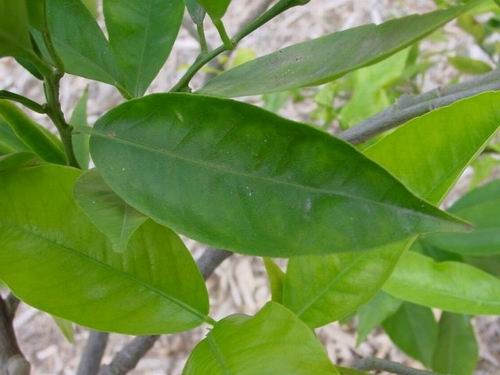

Kumquat leaves never change their color
Bloom
Fortunella blooms in late spring, covered with small white buds.


Flowers are axillary, solitary or in small groups
Fruit
In the fall, fragrant juicy fruits called kumquats appear on the plant.


The structure of the Kumquat resembles citrus fruits
The fruit is covered with a glossy golden skin with a pleasant aroma and sweet-spicy taste. Juicy, sour pulp is located under the skin. In combination with a sweet skin, it gives a sweet, sour taste.
Kumquat is edible. It is a storehouse of vitamins and nutrients. It is eaten in its natural form or processed into incredibly tasty candied fruits, marmalades, jams and preserves.


Kumquat in syrup
However, the plant is loved not only for its healthy and tasty fruits.
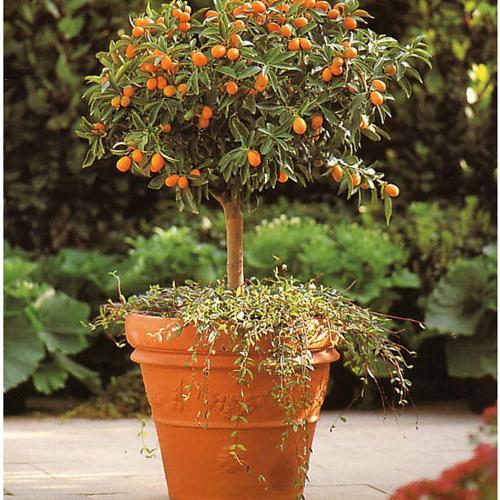

Decoratively the tree itself
Selection and preparation of seeds for planting
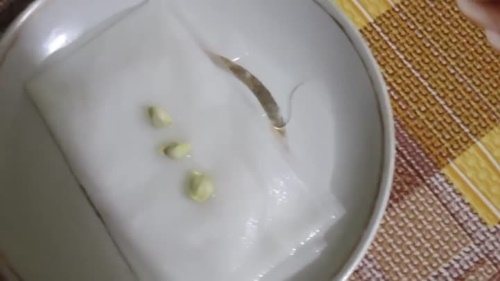

As with simple tangerines or oranges, seeds only from fresh fruits are suitable for planting. They should be ripe, deep dark orange in color. So that the hard shell of the seeds does not interfere with the appearance of sprouts, they must be pretreated, namely:
- rinse in several waters.
- put in a cloth bag or gauze.
- stand for several days, making sure that the fabric does not dry out.
A growth stimulant can be added to the soaking water.
How to prepare the soil for planting
Asking the question: "How to grow a kumquat at home?", You should primarily be interested in the composition of the soil for the growth of this plant.
The first thing to know about the soil for a kumquat is that it should consist of equal parts of garden soil and river sand. Before mixing, the sand is well calcined in the oven.
Then the treated and mixed soil is poured into a pot no more than 8 cm in diameter, but high. Previously, drainage is poured into the bottom of the pot in the form of coarse sand or expanded clay.

